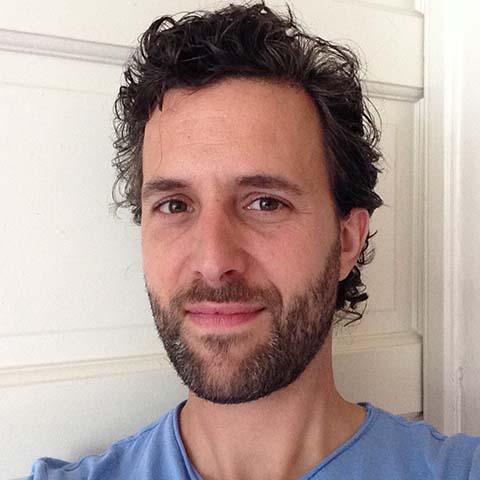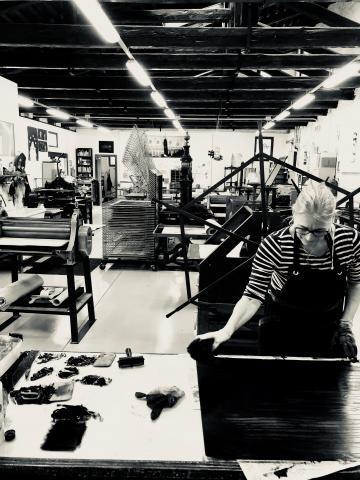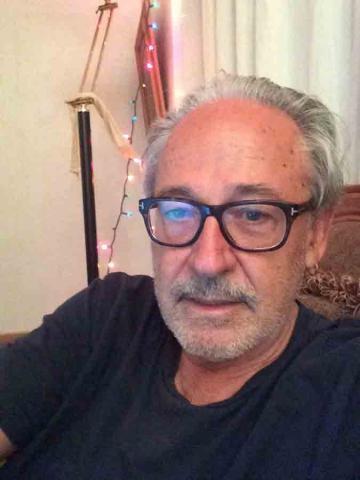My Studio in San Francisco is based in an area of postindustrial decline, populated by architecture that is on the periphery of people’s vision, hidden either by design or by obsolescence, abandoned and forgotten.
My work has always been informed by my immediate environment, where I live, work and go has a direct impact on the subject matter I am drawn to. After moving from London to San Francisco in 2001, I became fascinated by structures displaying a sense of strength and energy, but ignored, threatened by the passage of time to ultimate defeat by corrosion and decay. My work is concerned with depicting how these giant structures appear, not through a sense of romantic yearning for the past, but by responding to location and documenting how they appear to me, now, in the moment.
As an artist who works primarily on paper, Printmaking is the perfect vehicle for me to explore these themes of atmosphere and corrosion. The Monoprint process enables me to create images that are clotted and heavy with dark ink. I use deeply saturated colors and textures not only to reveal the surfaces of the structures but also to permeate the emptiness around them. The physical nature of, and energy involved in making large format Monoprints imbues the work with the frank monumentality of its subject matter. Each step of the process, from drawing the image onto the plate, scouring and gouging, inking, and finally, wiping the surface for printing, suffuses the final print with a textural, tactile, physical quality difficult to achieve in other media, creating the perfect balance of color, texture and line.
Drawing is a crucial and integral part of my practice and I always carry a sketchbook, making quick pen and ink sketches or swift watercolor studies of my subject matter. This direct engagement enables me to emphasize the essence of the moment both physically and intellectually. Making use of the sketches when I make my prints allows me to stay true to that initial response, the gut feeling I experienced when I made my initial drawings. Only in that way can I hope to stay true to the emotional reaction of that specific time and place.



